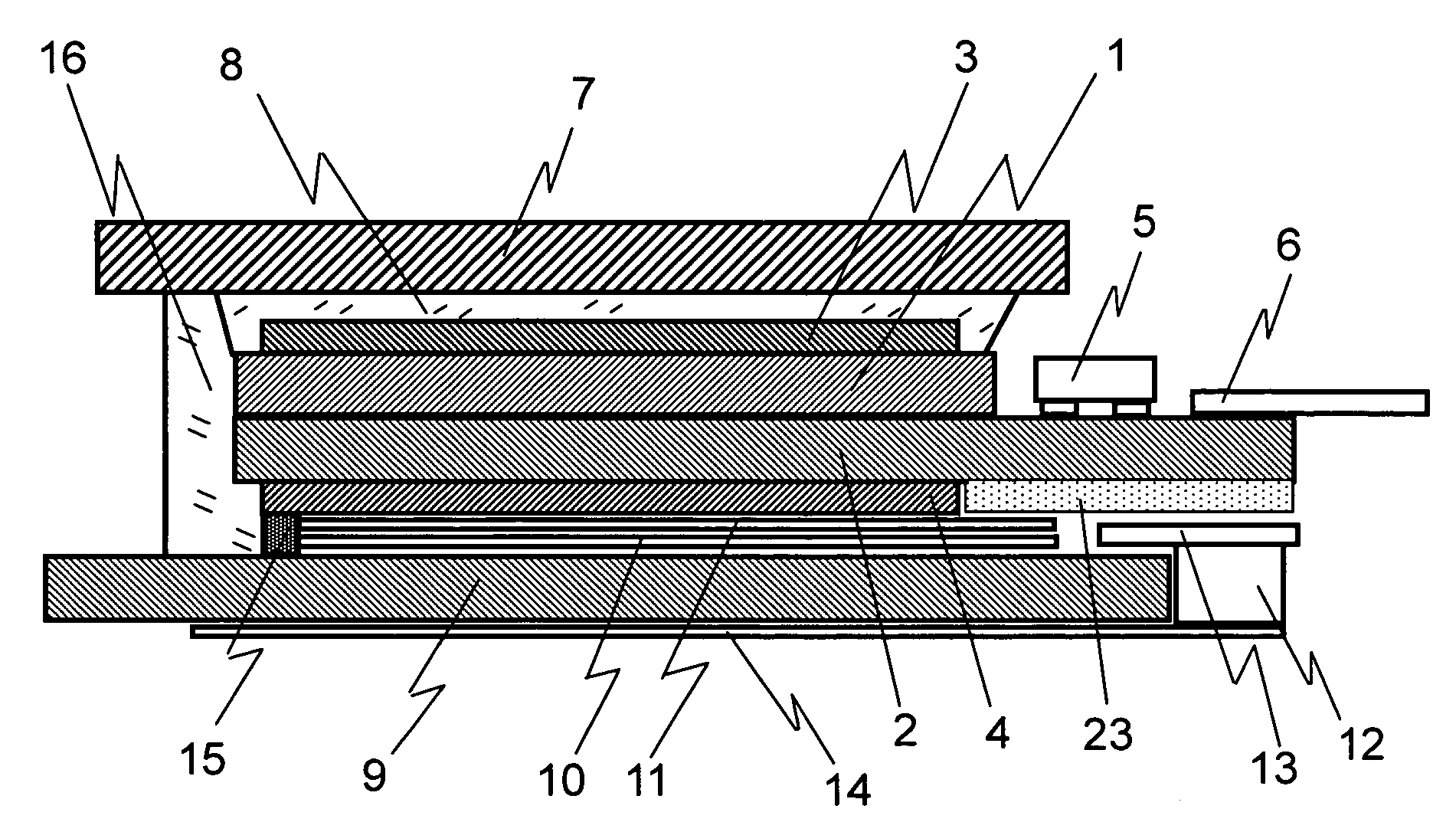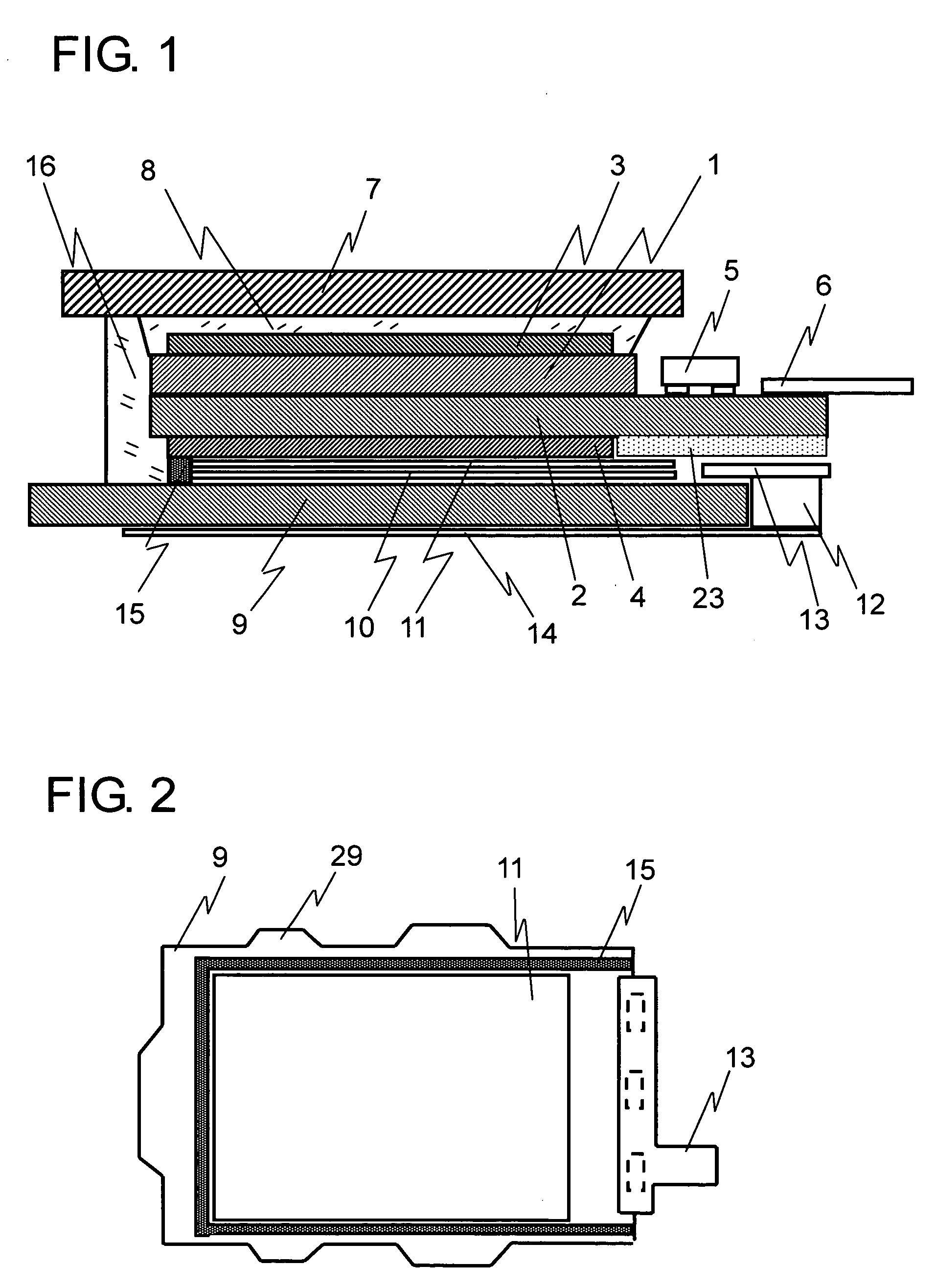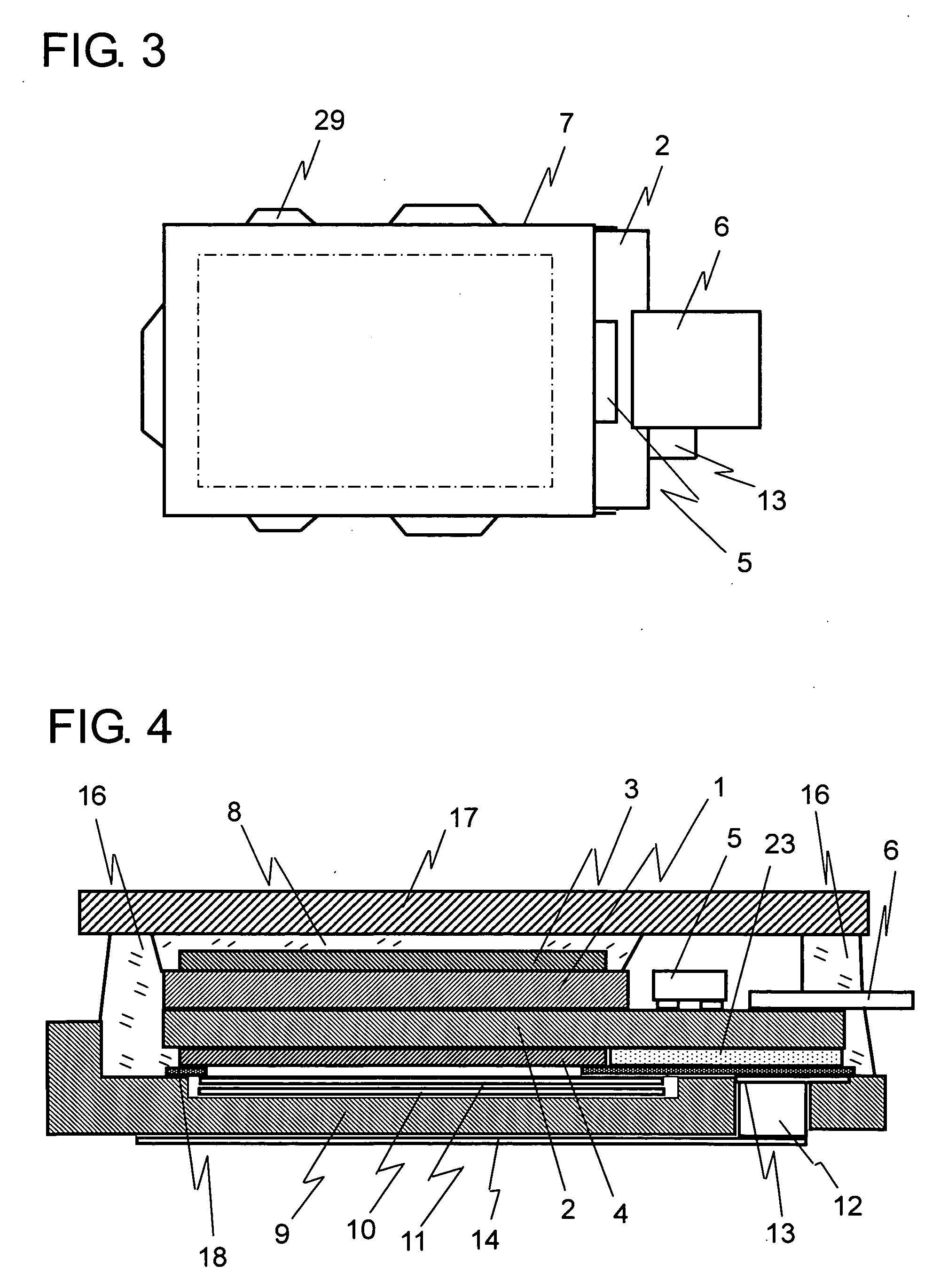Display device
a technology of a display device and a display plate, which is applied in the direction of electric apparatus casings/cabinets/drawers, instruments, planar/plate-like light guides, etc., can solve the problems of frequent breakage of glass substrates, damage to liquid crystal panels, and liable peeling, so as to improve the adhesive strength
- Summary
- Abstract
- Description
- Claims
- Application Information
AI Technical Summary
Benefits of technology
Problems solved by technology
Method used
Image
Examples
first embodiment
[0041]A first embodiment of the present invention is described with reference to FIGS. 1 to 3. FIG. 1 schematically illustrates a cross-sectional structure of a first embodiment. FIG. 2 is a top perspective view schematically illustrating a backlight used in the first embodiment. FIG. 3 is a top view illustrating the first embodiment. A liquid crystal panel is configured in such a manner that liquid crystal is sealed in a gap between a glass substrate 1 that is 0.1 to 0.15 mm in thickness and an opposed glass substrate 2, and the gap is held by a sealing agent (for example, UV curable adhesive) that is disposed on the outer periphery. In this embodiment, a color filter and a transparent electrode are formed on the glass substrate 1, and a TFT array element and a terminal that mounts a driver IC are formed on the opposed glass substrate 2.
[0042]In the liquid crystal panel, an absorptive polarizing plate 3 is bonded to a display surface side, and a polarizing element 4 having an absor...
second embodiment
[0050]Hereinafter, a description is given of a second embodiment of the present invention with reference to FIGS. 4 to 6. FIG. 4 schematically illustrates a cross-sectional structure of a second embodiment. FIG. 5 is a top perspective view schematically illustrating a backlight used in the second embodiment. FIG. 6 is a top view illustrating the second embodiment. The second embodiment is different from the first embodiment in the detailed structure of the backlight and the position of the adhesive 16 that is disposed on the outer periphery of the liquid crystal panel. The duplicated description of the first embodiment such as the structure of the liquid crystal panel is appropriately omitted.
[0051]A touch panel 17 is bonded to the entire surface of the display side of the liquid crystal panel with the optical adhesive 8. The touch panel has various systems and various structures. In this embodiment, PET films on which transparent conductive films are formed face each other. Further...
third embodiment
[0058]Hereinafter, a description is given of a third embodiment of the present invention with reference to FIG. 7. FIG. 7 is a diagram schematically illustrating a cross-sectional structure of the third embodiment. The third embodiment is different from the second embodiment in the detailed structure of the backlight. The duplicated descriptions of the first and second embodiments are appropriately omitted.
[0059]The entire surface of the touch panel 17 adheres to the display surface side of the liquid crystal panel with the optical adhesive 8. The backlight includes the second film substrate 13 on which the LED 12 is mounted, the light guide plate 9, and a frame 19. The frame 19 is made of white polycarbonate, and has an opening into which the light guide plate is fitted. The frame 19 and the liquid crystal panel are fixed to each other with the adhesion material 15. In this embodiment, a double-faced adhesive tape is used as the adhesion material to fix the liquid crystal panel and...
PUM
| Property | Measurement | Unit |
|---|---|---|
| viscosity | aaaaa | aaaaa |
| thickness | aaaaa | aaaaa |
| thickness | aaaaa | aaaaa |
Abstract
Description
Claims
Application Information
 Login to View More
Login to View More - R&D
- Intellectual Property
- Life Sciences
- Materials
- Tech Scout
- Unparalleled Data Quality
- Higher Quality Content
- 60% Fewer Hallucinations
Browse by: Latest US Patents, China's latest patents, Technical Efficacy Thesaurus, Application Domain, Technology Topic, Popular Technical Reports.
© 2025 PatSnap. All rights reserved.Legal|Privacy policy|Modern Slavery Act Transparency Statement|Sitemap|About US| Contact US: help@patsnap.com



